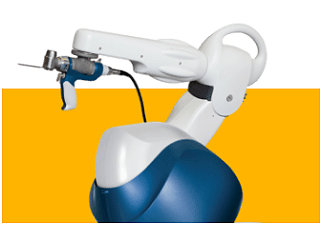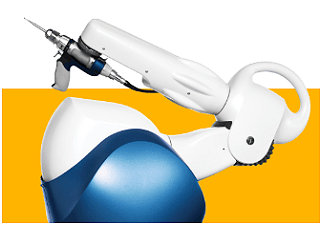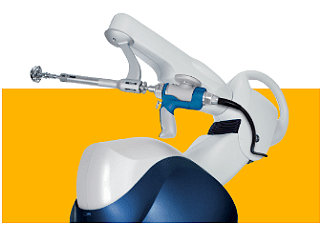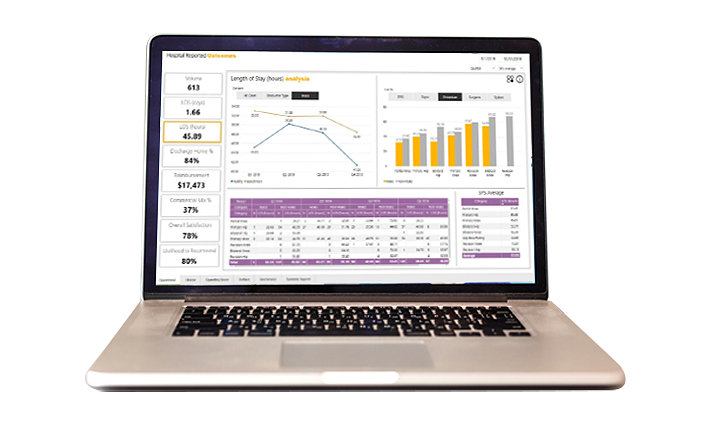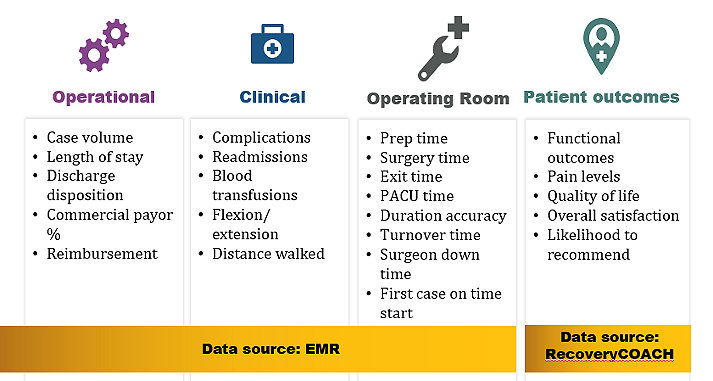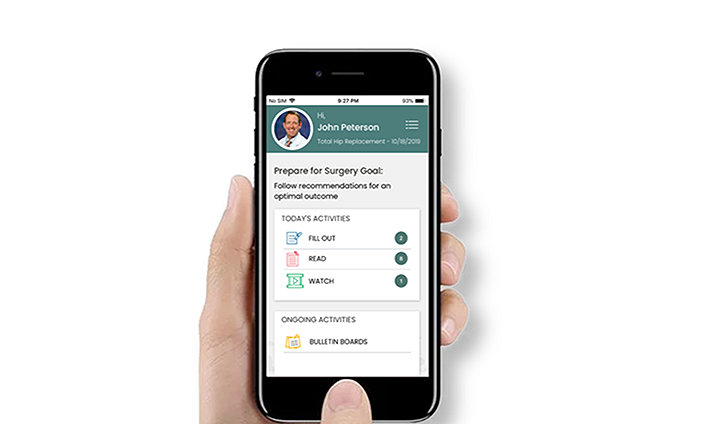Know more. Cut less.1-5
Mako SmartRobotics™ combines three key components: 3D CT-based planning, AccuStop™ haptic technology and insightful data analytics, into one platform that has shown better outcomes for your total knee, total hip and partial knee patients.6-8
Know more
It all starts with a CT scan that creates a 3D image of your patient’s unique anatomy. This information you’ve never had before allows you to create your patient’s plan and assess and balance the joint.
Cut less
Using everything the CT scan helps you to know about your patient, Mako's AccuStop™ haptic technology guides you to cut what’s planned precisely for each patient.6,9,10 For some patients, that means preserving soft tissue; for others, that means saving healthy bone.1-5
See Mako in action
Dynamic joint balancing with Mako Total Knee
Functional hip positioning with Mako Total Hip
Bone prep with Mako Partial Knee
For more procedural videos, visit Stryker's Training Academy
As part of our Mako SmartRobotics™ program,* Stryker’s dedicated team works alongside you to understand your data, your goals and your challenges. Our dashboard and tools help you to see trends and drill into specific case details to view areas of success and to discover areas that have opportunity for improvement. Our program can help you make more informed decisions through insightful data analytics.
The Mako SmartRobotics™ program* includes two essential data platforms - our Hospital/ASC Reported Outcomes (HRO) dashboard and RecoveryCOACH, our patient engagement and patient-reported outcomes collection portal and app. With the insights and engagement driven from both of these platforms, we can help you:
- Enhance patient engagement to help improve satisfaction scores**
- Benchmark your data to compare outcomes to look for areas of opportunity for improvement
- See a comprehensive view of key performance indicators of your orthopaedic service line
Turn data into insights and insights into action
- As part of the Mako SmartRobotics program™,* Stryker’s dedicated team will work with you to verify and review your data on a quarterly basis and help you implement the RecoveryCOACH platform
- Access to detailed data and patient-reported outcomes can help you share your success with the community
*Access to the Mako Program Analytics offering requires execution of a separate Mako Program Analytics agreement.
**Patient satisfaction is measured by the HCAHPS (Hospital Consumer Assessment of Healthcare Providers and Systems) Survey, a national, standardized, publicly reported 29-item survey instrument and data collection methodology for measuring discharged patients’ perspectives of their hospital experience.
*For the Mako Total Knee application, “cut less” refers to less soft tissue damage and greater bone preservation as compared to manual surgery.1,2 For the Mako Total Hip and Partial Knee applications, “cut less” refers to greater bone preservation as compared to manual surgery.3-5
References:
- Kayani B, Konan S, Pietrzak JRT, Haddad FS. Iatrogenic bone and soft tissue trauma in robotic-arm assisted total knee arthroplasty compared with conventional jig-based total knee arthroplasty: a prospective cohort study and validation of a new classification system. J Arthroplasty. 2018;33(8):2496-2501. doi:10.1016/j.arth.2018.03.042
- Hozack WJ. Multicentre analysis of outcomes after robotic-arm assisted total knee arthroplasty. Bone Joint J:Orthop Proc. 2018;100-B(Supp_12):38.
- Suarez-Ahedo C, Gui C, Martin TJ, Chandrasekaran S, Lodhia P, Domb BG. Robotic-arm assisted total hip arthroplasty results in smaller acetabular cup size in relation to the femoral head size: a matched-pair controlled study. Hip Int. 2017;27(2):147-152. doi:10.5301/hipint.5000418
- Banks SA. Haptic robotics enable a systems approach to design of a minimally invasive modular knee arthroplasty. Am J Orthop (Belle Mead NJ). 2009;38(2 Suppl):23-27.
- Hampp E, Chang T-C, Pearle A. Robotic partial knee arthroplasty demonstrated greater bone preservation compared to robotic total knee arthroplasty. Presented at: Orthopaedic Research Society (ORS) Annual Meeting; February 2-5, 2019; Austin, TX.
- Illgen RL, Bukowski BR, Abiola R, et al. Robotic-assisted total hip arthroplasty: Outcomes at minimum two year follow up. Surg Technol Int. 2017;30:365-372.
- Kayani B, Konan S, Tahmassebi J, Pietrzak JRT, Haddad FS. Robotic-arm assisted total knee arthroplasty is associated with improved early functional recovery and reduced time to hospital discharge compared with conventional jig-based total knee arthroplasty: a prospective cohort study. Bone Joint J. 2018;100-B(7):930-937. doi:10.1302/0301-620X.100B7.BJJ-2017-1449.R1
- Kleeblad LJ, Borus TA, Coon TM, Dounchis J, Nguyen JT, Pearle AD. Midterm survivorship and patient satisfaction of robotic-arm-assisted medial unicompartmental knee arthroplasty: a multicenter study. J Arthroplasty. 2018;33(6):1719-1726. doi:10.1016/j.arth.2018.01.036
- Bell SW, Anthony I, Jones B, MacLean A, Rowe P, Blyth M. Improved accuracy of component positioning with robotic-assisted unicompartmental knee arthroplasty: data from a prospective, randomized controlled study. J Bone Joint Surg Am. 2016;98(8): 627-635. doi:10.2106/JBJS.15.00664
- Mahoney O, Kinsey T, Mont M, Hozack W, Orozco F, Chen A. Can computer generated 3D bone models improve the accuracy of total knee component placement compared to manual instrumentation: a prospective multi-center evaluation? Presented at: International Society for Technology in Arthroplasty 32nd Annual Congress. Toronto, Canada. October 2-5, 2019.
MKOSYM-AD-30_29123

